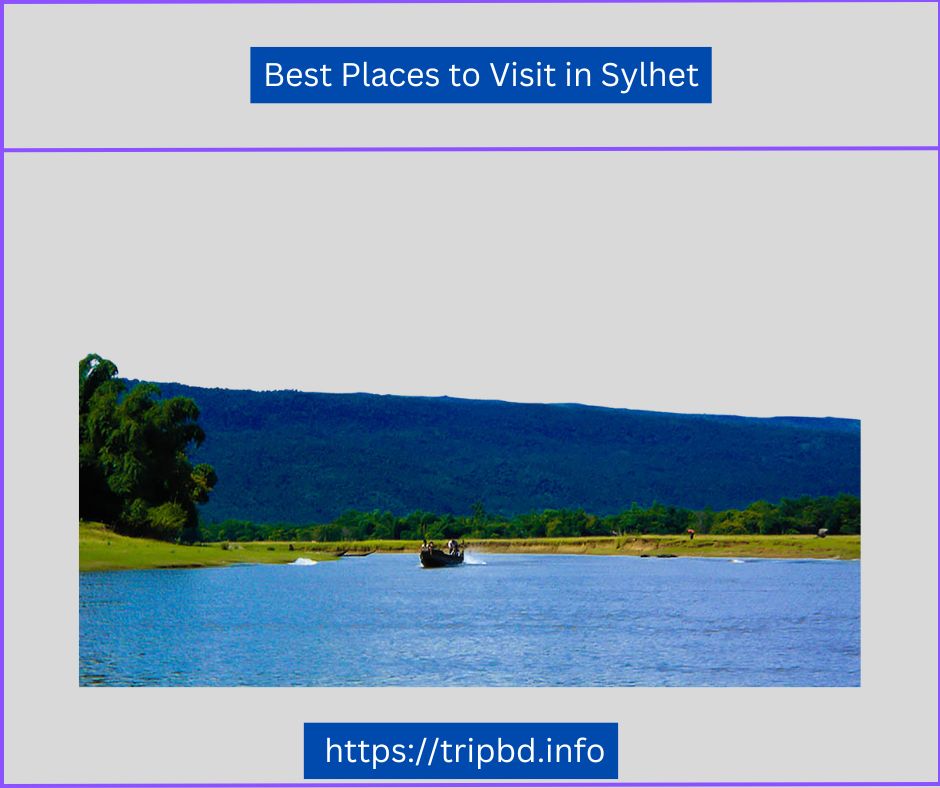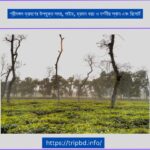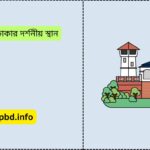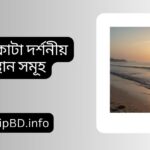Welcome to Sylhet, a stunning region in northeastern Bangladesh that’s often called the “land of two leaves and a bud” because of its beautiful tea gardens. This place is a perfect mix of breathtaking natural beauty and rich spiritual history. From rolling green hills and crystal-clear rivers to lively wetlands and deep forests, Sylhet will truly captivate your heart.
Why You’ll Love Sylhet
No matter what kind of traveler you are, Sylhet has something for you.
- For Nature Lovers: Get ready for stunning waterfalls, swamp forests that feel like a fairytale, and rivers that glow emerald green.
- For the Spiritually Minded: Discover sacred shrines that draw visitors from all over the world.
- For Tea Fans: Walk through endless tea plantations that produce some of the best tea on the planet.
- For Everyone Else: Experience the unique Sylheti culture, delicious food, and incredibly warm hospitality.
Top 10 Must-Visit Spots
1. Jaflong – The Daughter of Nature
Jaflong is the crown jewel of Sylhet, located right on the border with India. The scenic Piyain River flows over a bed of stones with the majestic Meghalaya hills in the background—it’s a photographer’s dream. While the water is calmer in winter, the charm of the rocky riverbanks and surrounding tea gardens is always there.
- What to do: Watch people collecting stones, take stunning photos of the river, and stroll through the tea gardens.
2. Bichnakandi – Where Stones and Streams Meet
Bichnakandi is a must-see spot that has become super popular recently. During the monsoon season, mountain streams rush down over a natural bed of stones, creating a truly magical scene.
- What to do: Take a boat ride, photograph the waterfalls, and try a little hill trekking.
3. Ratargul Swamp Forest – The Amazon of Bangladesh
This is Bangladesh’s only freshwater swamp forest, and it’s a surreal experience. The best time to visit is during the monsoon when you can glide by boat between partially submerged trees. In winter, the forest is a haven for migratory birds.
- What to do: Go on a boat tour, watch for birds, and take some incredible nature photos.
4. Bholaganj Sada Pathor – The White Stone Paradise
In Companiganj Upazila, you’ll find Bholaganj, known for its huge stone quarries and the crystal-clear Dhalai River. The riverbed is full of stunning white stones that look spectacular against the backdrop of the Meghalaya mountains.
- What to do: Walk in the river, admire the white stones, and take photos of the mountains.
5. Hakaluki Haor – A Birdwatcher’s Heaven
This is the largest wetland in Bangladesh, and it’s a paradise for migratory birds in winter. From November to February, thousands of birds flock here, making it a dream spot for anyone who loves birds or photography.
- What to do: Birdwatching, boat rides, and exploring the wetlands.
6. Lalakhal – The Emerald Waters of Sylhet
Just a short drive from Jaflong, Lalakhal is famous for the emerald-green water of the Sari River, which gets its color from natural minerals. A peaceful boat ride here is the perfect escape.
- What to do: Take a boat trip, snap some photos of the scenery, and just relax by the river.
7. Songrampunji Waterfall
This hidden gem is a short hike from Jaflong, near the India-Bangladesh border. It’s a beautifully untouched waterfall that shows off Sylhet’s raw natural beauty.
- What to do: Hike to the falls, take pictures, and just soak in the nature.
8. Lovachora – Tea Gardens & A Hanging Bridge
Lovachora is a bit off the beaten path but just as beautiful. It has lovely tea gardens, rubber plantations, and an old hanging bridge. It’s the perfect place to get away from the city hustle.
- What to do: Walk through the tea gardens, cross the hanging bridge, and tour the plantations.
9. Hazrat Shahjalal (R.) Mazar – The Spiritual Heart
Right in the heart of Sylhet city, this shrine is one of the most important religious sites in Bangladesh. The complex has a pond with rare Gazar fish and is home to thousands of sacred pigeons.
- What to do: Reflect spiritually, admire the architecture, and learn about the local culture.
10. Dibir Haor – The Sea of Red Water Lilies
From November to February, Dibir Haor turns into a magical landscape covered in blooming red water lilies. Visiting at dawn is especially breathtaking.
- What to do: Get there early for sunrise photos, take a boat ride, and admire the lilies.
Must-See Spots in Sylhet City
- Malnichhara & Lakkatura Tea Gardens: Malnichhara is the oldest tea garden in Bangladesh, and Lakkatura is one of the biggest. Both are perfect for a relaxing walk.
- Hazrat Shah Paran (R.) Mazar: Located on the eastern side of the city, this shrine honors Shahjalal’s nephew and is another important spiritual spot.
- Keane Bridge & Ali Amjad’s Clock: The Keane Bridge, built in 1936, is a symbol of Sylhet. Nearby, the historic Ali Amjad Clock Tower adds a touch of old-world charm to the riverside.
The Best Time to Visit Sylhet
- Winter (November–February): This is the best time to visit overall. The weather is cool and comfortable (around 15-25°C), and it’s peak season for birdwatching at the haors and seeing the red water lilies at Dibir Haor.
- Monsoon (June–September): If you want to see the waterfalls and rivers at their most powerful, this is the time to go. It’s warm with heavy rain (25-32°C), but Ratargul and Bichnakandi are at their most stunning.
- Summer (March–May): It can get hot and humid (28-35°C), but it’s less crowded and a good time for budget travelers.
How to Get to Sylhet from Dhaka
- By Air (Fastest): It’s only a 1-hour flight to Osmani International Airport. Perfect if you’re short on time.
- By Train (Scenic): A 6-7 hour journey on trains like the Parabat or Upaban Express is a comfortable and beautiful way to travel.
- By Bus (Budget-Friendly): The 6-8 hour bus ride is a great option if you’re on a budget or have a flexible schedule.
- By Car (Most Flexible): If you’re traveling with a group or family, a 3.5-4 hour drive gives you the most freedom.
Sylhet Tour Packages & Costs
- Budget (৳2,000-8,000 per person): Day trips to 3-day tours with basic transport and accommodation.
- Mid-Range (৳8,000-15,000 per person): A 3-4 day trip that includes AC transport and 3-star hotels.
- Premium ($245-600 per person): A customizable 3-7 day trip with English-speaking guides and top-tier hotels.
Must-Try Sylheti Food
- Shatkora Curry: A tangy curry made with a unique citrus fruit that’s a local specialty.
- Pitha: Traditional rice cakes that come in many different styles.
- Haring: A fermented fish delicacy.
- Seven-Layered Tea: A famous, beautiful drink you can only find here.
For the best food experience, try the local restaurants in the Bondor Bazar area.
What to Pack for Your Trip
- Clothes: A waterproof jacket for monsoon, comfortable walking shoes, and modest clothes for religious sites. Lightweight cotton clothes for summer and warm layers for winter evenings.
- Gear: A camera with a waterproof cover, bug spray, sunscreen, a hat, and a power bank.
- Important Stuff: Your ID or passport, hotel bookings, and cash, as many rural spots don’t take cards.
Essential Travel Tips
- Safety: Sylhet is generally safe. Use licensed guides and transportation, wear a life jacket on boats, and keep an eye on your valuables.
- Local Customs: Dress modestly, especially at religious sites. Take off your shoes before entering shrines, and ask for permission before taking photos of people.
- Money: Always carry cash, especially in rural areas. ATMs are easy to find in the city.
- Getting Around: Use CNG auto-rickshaws for short trips in the city and rent a private car for day trips.
A Few Common Questions
- How long should I stay? A minimum of 3-4 days to see the main spots. If you have 5-7 days, you can really explore.
- Is it good for families? Absolutely! Many places like parks and gardens are perfect for kids.
- What about the monsoon season? It’s a great time to visit for the waterfalls and forests, but be prepared for rain and possibly some travel delays.
- Do I need a guide? It’s not a requirement, but a local guide can help you find hidden gems and teach you about the culture.
- What’s the local language? The main language is Bengali, with a local dialect called Sylheti. Many people in the tourism industry speak English.
Final Thoughts
Sylhet is more than just a place to visit; it’s an experience that brings together natural beauty, culture, and peace. From the emerald glow of Lalakhal to the peaceful shrines and the lush tea gardens, Sylhet offers something for everyone.
Start planning your adventure today and discover why this northeastern gem continues to charm travelers from all over the world. Safe travels!
I love to travel as a passion. Through traveling, I gather experiences, and I love to share them with you.










